Dry conditions still persist throughout Massachusetts despite some sporadic rainfall. My walk today was entirely unfruitful but yesterday my wife found some nice patches of this mushroom I have never seen before.
Here they are hiding in some shrubs on the side of the path. They are well hidden especially camouflaged for a trail with many dog-walkers...
The woods were a deciduous mix (scrub/shrub) before the trail enters into the oak section and before the pine barrens where pines dominate the sandy soil.
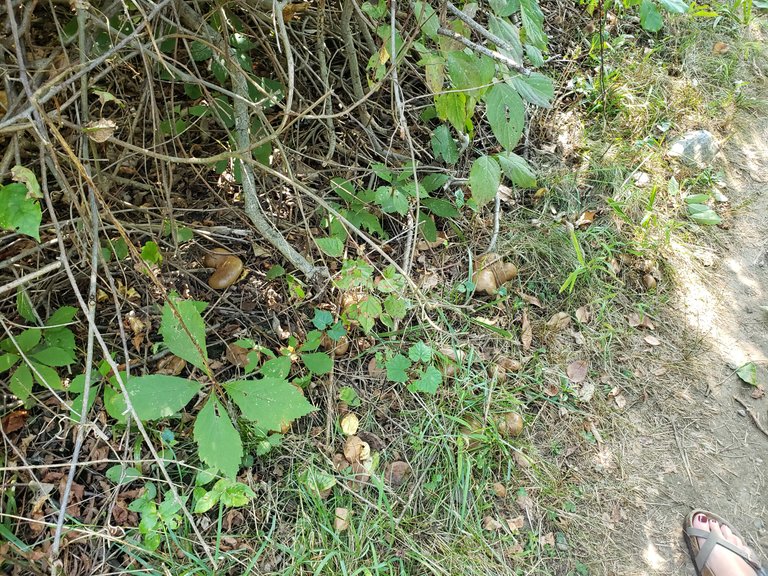
From the top, the caps were a plain brown and later we found another patch of them with brown caps and browner spots.
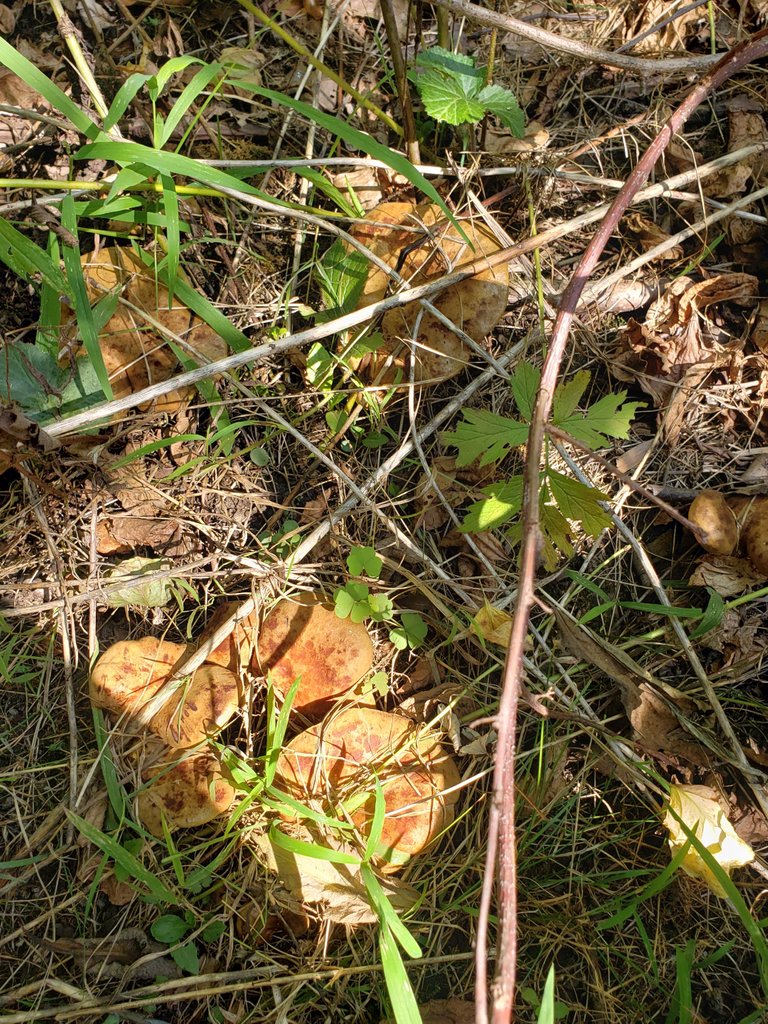
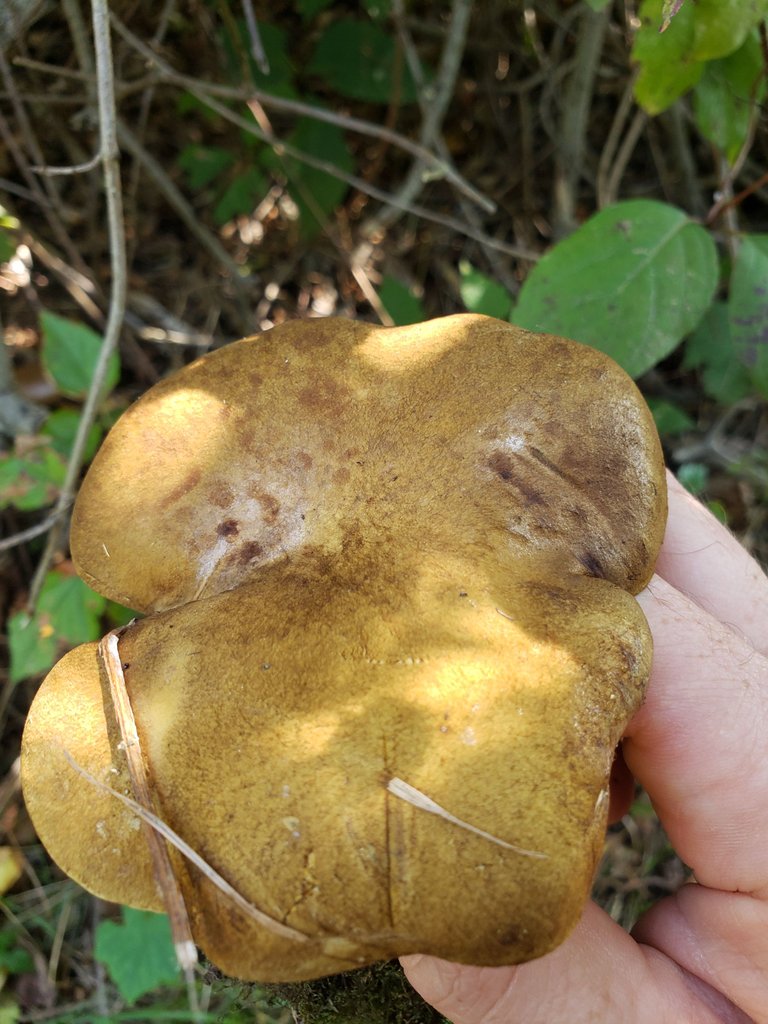
Above is the yellowish-brown cap with some brown bruising. They can also bruise bluish or not bruise at all.
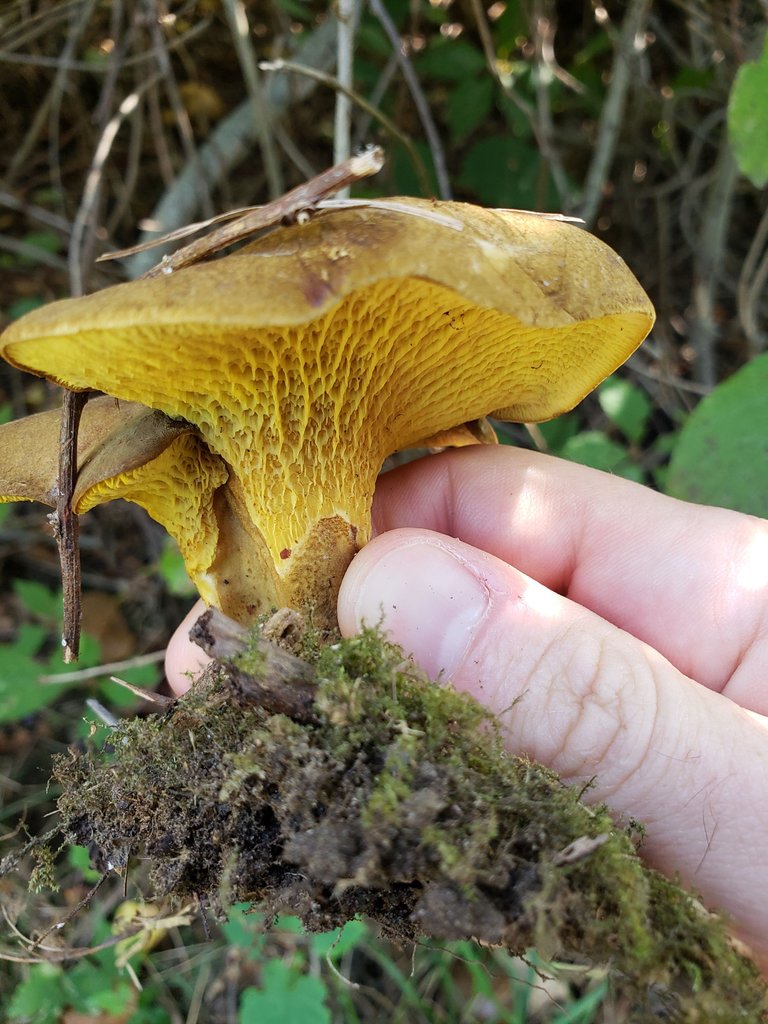
My first thought was Suillaceae because of the yellow radially-elongated pores underneath but it wasn't quite right. The pore surface travels down the stipe unlike the Suillus species I am familiar with in my area.
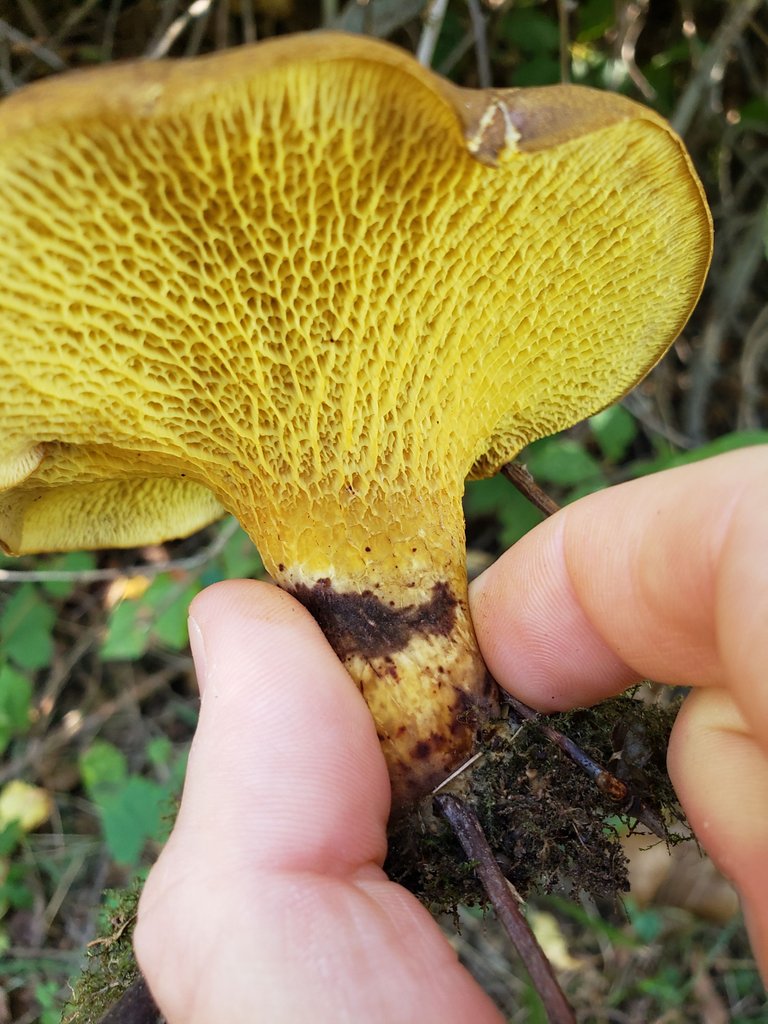
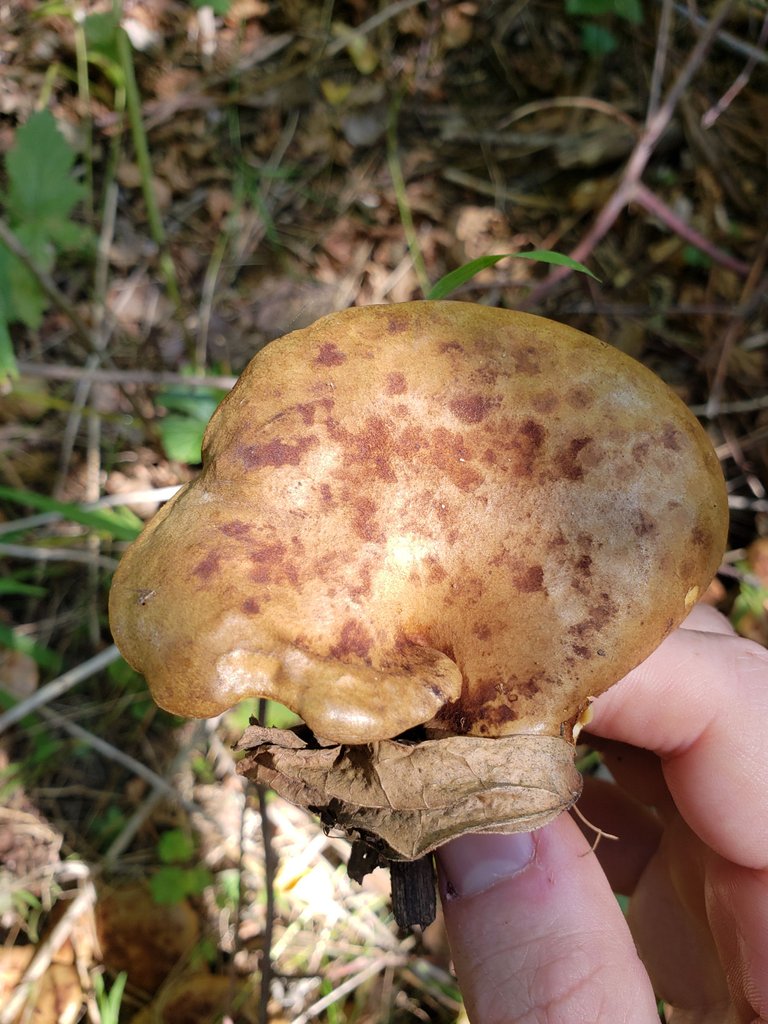
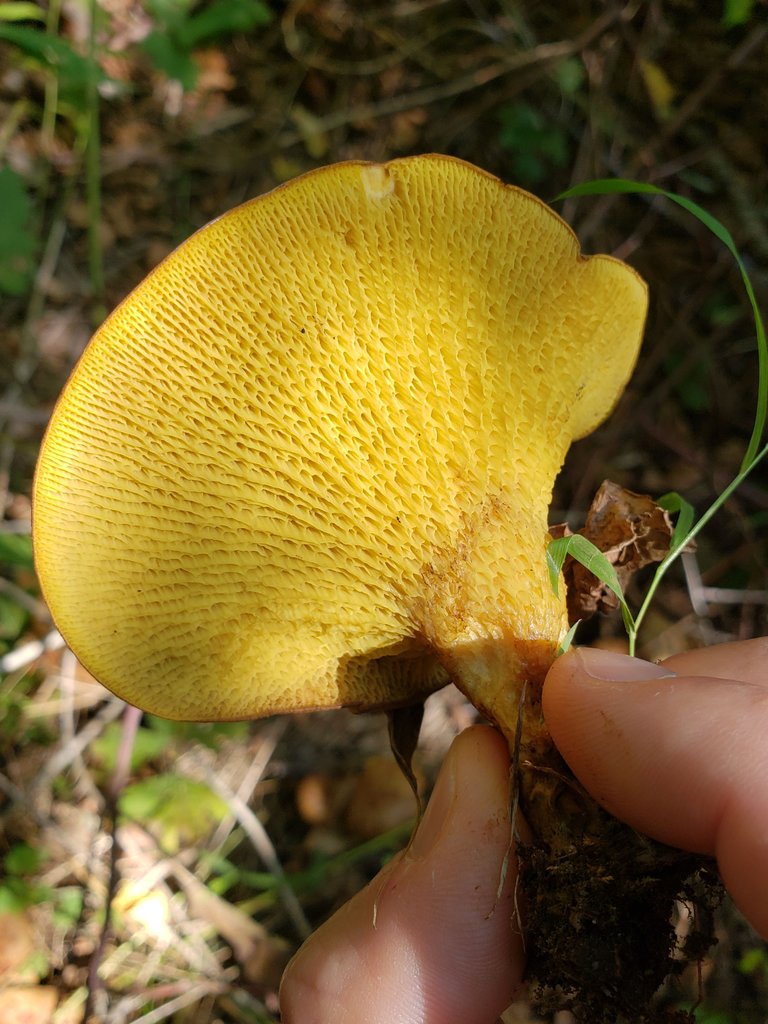
After researching online after we got back we hit the species Boletinellus merulioides, a type of bolete. All the ID characteristics seem to match up but I'm welcome to correction or skepticism!
This species has the common name of Ash Tree Bolete because they are found in a second-order relationship with Ash trees. However, when we found these I looked around at the trees and couldn't identify the small trees surrounding these patches. There presumably was an Ash tree nearby in both cases but perhaps just a young short one. It was a shrubby jumble down the trail with many trees and plants enveloping the trail into an almost tunnel. There very well could have been Ash tree root systems in the area where these mushrooms were growing.
The Ash Tree Bolete was first described from eastern North America though it has also been reported in Japan since then.
Kingdom: Fungi
Phylum: Basidiomycota
Subphylum: Agaricomycotina
Class: Agaricomycetes
Subclass: Agaricomycetidae
Order: Boletales
Suborder: Sclerodermatineae
Family: Boletinellaceae
Genus: Boletinellus
Species: Boletinellus merulioides
This bolete is unusual in that it forms sclerotia frequently and en masse. These are hardened packets of mycelium that can be used to store food reserves during poor growing conditions. The Ash Tree Bolete is not actually mycorrhizal with Ash trees(!) but instead forms a relationship with aphids that are parasitic on the roots of Ash trees. The aphids are provided shelter within the sclerotia formed by the fungus and in return the fungus takes the carbohydrates and honeydew produced by the aphids.
This was my first time finding this species and the first time I ever heard about a fungus utilizing this type of resource to feed on! Really cool stuff. Interesting that it was one of the few mushroom species that we discovered on our walk. I guess the aphids are doing just fine during the drought and providing plenty of honeydew 😄
Sources:
MushroomExpert.com
Wikipedia-Boletinellus merulioides
Wikipedia-Sclerotium
Wow that is an awesome pore pattern underneath. Very unique for a bolete or any other mushroom. Super cool find.